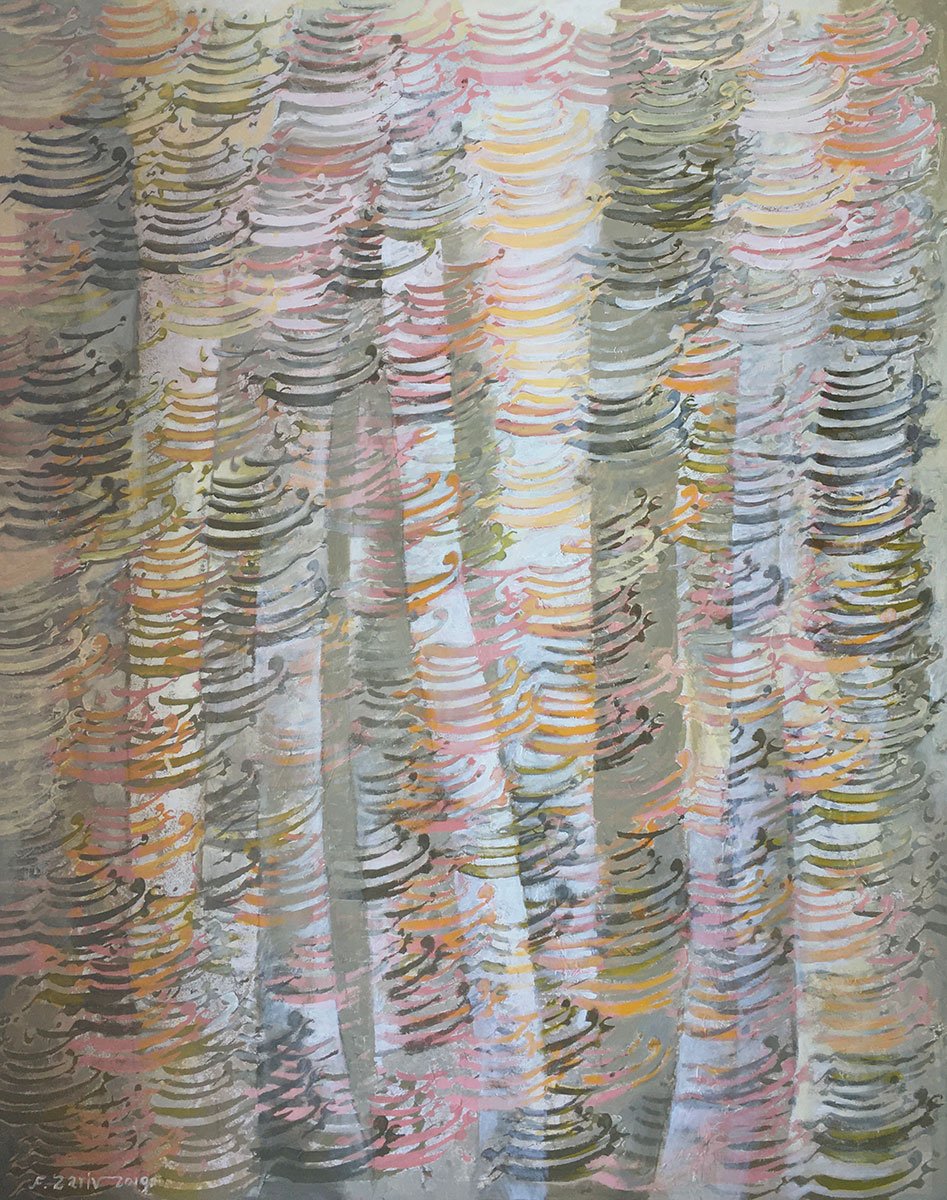Artist Statement
The role of words in human life is vital. It is the source of human civilisations, the development of new sciences, ideas and religions, and human guidance and awareness. To the extent that human life is divided into “historical” periods, “before and after history”, according to the origin. For this reason, writing was the beginning of the history of human life and the time when a man could embed his life story in pages and remember a line from the page or something like that.
The word, as the guardian of science and the educator of scientists, preserves the link between the intellectuals of the past and the future, and even the link between heaven and earth. Like a double-edged sword, words can either shroud life in darkness and ignorance or illuminate it with liberation, hope, and victory. They are the catalysts of transformation, inspiring us to strive for a brighter future.
In my ‘Word in Art’ series, I have dedicated my focus to exploring the timeless aesthetic power of Arabic and Persian letters in painting. These letters, serving as my artistic medium, bridge the gap between the past and the present, conveying profound messages that resonate across generations.
I try to showcase and preserve the rich culture and heritage of the Middle East. In this series of artwork, I have utilized Persian letters and poems, which are integral to our visual arts heritage and have always influenced the identity of Middle Eastern artists. I have experimented with different techniques and materials in these works, which is a testament to my dedication to this cause.
Project Details
Cure8 Art Gallery
Muscat, Oman – 2022
“Farideh Zariv who identifies with both Western and her Persian culture, boldly and reverently pushes the Word into a new decade in a new century. The abstract appearance of the image sits well in a contemporary art world, but the level of meaning puts it into a higher level of understanding. “
Beverley Wood, Lecturer, University of Canberra
Exhibition Review
“In the beginning was the Word, and the Word was with God, and the Word was God.”
– Holy Bible, St John, Chapter 1, verse 1.
Artists and believers of the Word gave it visual form and in so doing they created items of sheer beauty and holiness. Middle Eastern calligraphy whether in a book, palace or Mosque can just take one’s breath away. As a Westerner, I view such work with awareness of the tradition of sacredness, love, and respect for the written and spoken word even if I cannot read it. Farideh Zariv and her family have educated me with translations of much-loved poets for which I am most grateful. The endless variation in calligraphic style and applications in mosques etc. is awe inspiring and has been so for centuries. It is what we see as exotic yet what we know is an expression of love, passion, and sanctity.
For a contemporary artist like Farideh Zariv who identifies with both Western and her Persian culture, she boldly and reverently pushes the Word into a new decade in a new century. The abstract appearance of the image sits well in a contemporary art world, but the level of meaning puts it into a higher level of understanding. Her cultural roots are on display as well as an understanding of the contemporary nature of art. Making the Word in visual form continues today through this new exhibition which successfully shows an ageless form of art asserting itself across both the Western and Middle Eastern cultures and art societies. This is a significant exhibition.
Beverley Wood
Lecturer, University of Canberra, Australia












